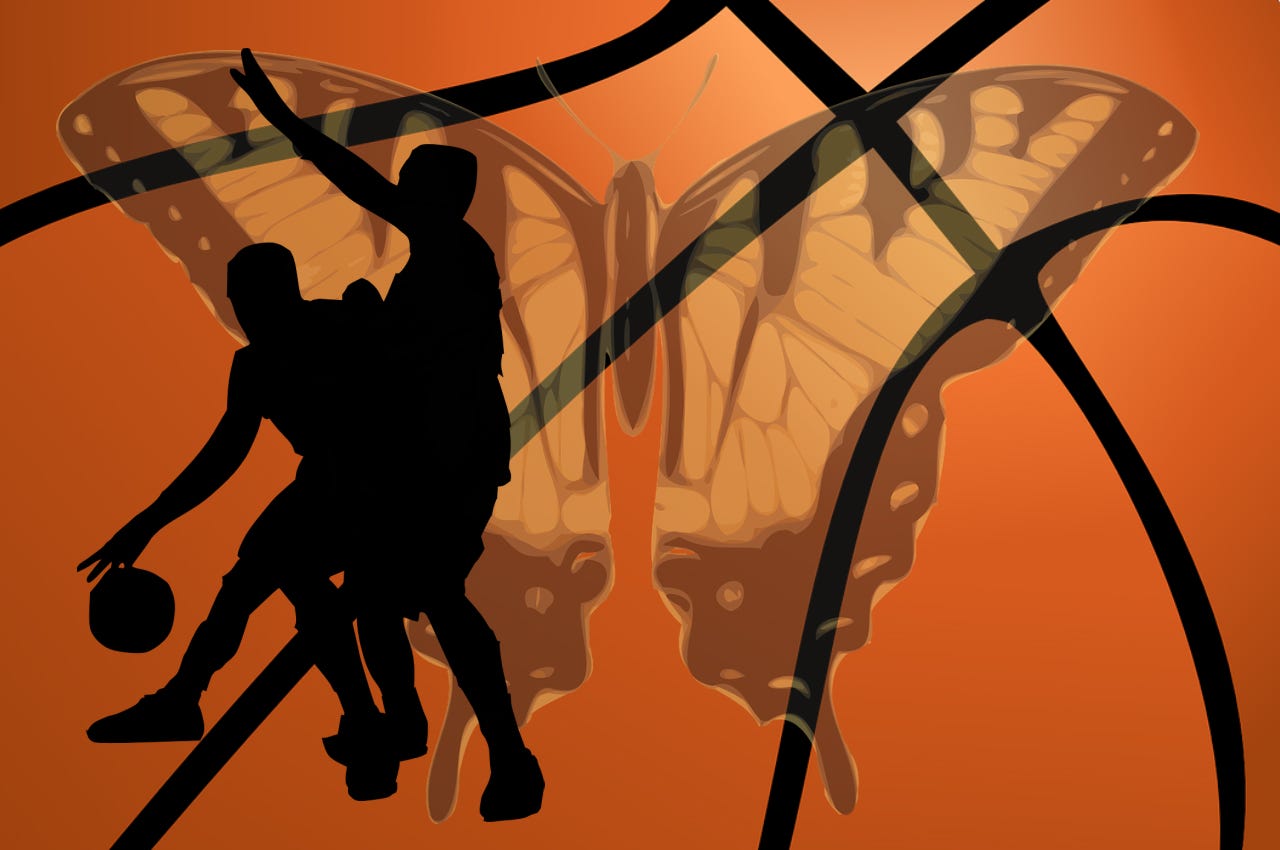Playing Basketball With Butterflies
The ethereal experience of playing ball with the Dinka of Sudan
Sudan is a massive country full of desert landscapes, camel caravans and an ancient and timeless character. Not exactly a basketball hotspot.
It was 1989, two decades before South Sudan gained independence. I landed in El Obeid, a 14 to 20 hour trek from the capital - Khartoum - traversing along impermanent sandy tracks laid down in the ground by heavy laden lorry traffic.
The size of Sudan is so hard to grasp. But it defines everything that happens there. I grew up in the large state of Texas. Yet, the old Sudan was 3.7 times bigger. Nothing moves fast when surrounded by enormous space. Every trip was an adventure just to get to your destination without delays from getting stuck in loose sand or losing hours due to poor navigation by the driver.
Basketball is a common thread in my life. As a military brat, I moved from South Dakota to Texas to Missouri to California and back to Texas. At every new stop, I found the local park and watched kids play basketball. The new kid never gets picked on a squad until everyone is either tired or some kids go home early. Basketball courts became my entry point into the community.
El Obeid offered very little in terms of sport recreation. There was a cracked concrete tennis court that was playable even with small potholes and odd bounces. We had a regular foursome of a German contractor, a Finnish forester, an American nurse and me. I never saw an outside basketball court in this truck stop town of a few hundred thousand.
Civil war has plagued the north and south regions of Sudan since the 1950s. These conflicts left the south in turmoil as destruction and displacement lead to 2.5 million people killed and millions of refugees fleeing their homelands. Many refugees lived in temporary shanty towns on the outskirts of El Obeid. Other refugees packed the rooftops of passenger train cars to take their chances elsewhere or stay with family in Khartoum. These scenes were so commonplace that you feel ashamed because your emotions become numb.
Many of these refugees were Dinka, a major ethnic group in region. Along with the Tutsi in Rwanda, the Dinka are some of the tallest people in Africa. They are lanky and lean with slender legs that remind you of stilts. Some young Dinka men made their way to El Obeid to attend high school at some of the Christian institutions. Inside the walls of these buildings were open concrete courtyards to facilitate student gatherings.
And guess what? An empty courtyard turns into half a basketball court when you roll up a hoop at one end. I found my community portal again and my passion amid the vastness of the desert. Time to play ball!
I’m 6 ft. 1 in. tall and an average recreational player. My game is hard defense, passing, picking and off-the-ball plays over shot-making. I also play very intense to make up for my lack of offense. In America, intensity gets you noticed and helps you get chosen for pick-up games.
The Dinka players were all taller than me. They probably averaged 6 ft. 4 in. and above with wingspans that reached out like 10 ft. poles. It was like going up against a squad of those inflatable plastic air dancers flapping in the sky. Except the Dinka did not wave wildly, they fluttered in slow motion. Their long limbs lingered in the air and moved in unison while shuffling across the dusty floor. They leaned over me and hovered like a small swarm of butterflies to prevent any shot attempts.
On offense, the Dinka passed with the same tender touch of their defense. American roundballers learn early on to make hard chest to chest passes or angular bounces off the floor. Passing the ball too soft and slow gave defenders time to steal the ball. Dinka players used their height to take another tact.
They all threw rainbow passes. Standing tall allows you to reach to the sky, so why pass any lower to the ground. So the air was filled with arcing orbs that floated like cotton balls. It was effective. I had no chance of reaching up to the rainbow.
It was all too surreal. Basketball was always an intense game. American supremacy in the game was forged with tough, hard, athletic play. How could it be played with such softness and delicacy, wearing worn down flip-flops nonetheless?
Outside those courtyard walls reality was very harsh. Life in southern Sudan was a constant barrage of ethnic fighting, poverty, relocation, poor health and mental stress. Playing against those Dinka students taught me a few lessons. I learned to appreciate the elegant grace and display of their game as a reflection of their strength and culture.
Fortunately, a few Dinka players have made it into the NBA. Among the notables are Manute Bol, Luol Deng and Thon Maker. Of course, these professionals are just as intense and tough as any American born player.
But sometimes I still see the butterflies.




